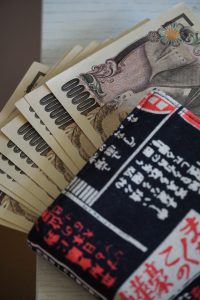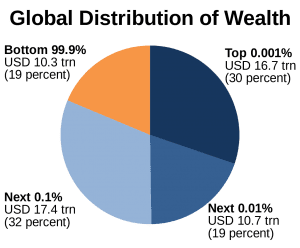High Yield Dividend ETFs: A Contrarian Approach to Wealth Creation
April 22, 2024
High-yield dividend Exchange Traded Funds (ETFs) have been a preferred choice for income-focused investors thanks to their ability to provide steady income streams. These ETFs invest in a broad range of companies that pay above-average dividends, allowing investors to enjoy a dual benefit – capital appreciation and regular income. However, as the late investing legend Charlie Munger often emphasized, the best opportunities frequently lie in taking a contrarian approach.
Munger and his partner, Warren Buffett, built a reputation and fortune by having the courage to defy market trends and focus on businesses’ intrinsic value. In the words of the Stoic philosopher Seneca, “the crowd is the mother of all evils,” meaning that following the herd mentality often leads to suboptimal outcomes. Applying this wisdom to dividend ETFs, the ideal time to invest, especially from a yield perspective, is frequently after a severe market correction or crash when fear is rampant and prices are depressed.
Mark Twain famously quipped, “Whenever you find yourself on the side of the majority, it is time to pause and reflect”. This highlights the importance of independent thinking and challenging consensus views. While buying when others are selling in a panic may feel uncomfortable, historically, that has proven to be a winning strategy for patient, long-term investors.
Of course, a contrarian approach requires discipline and diligence to execute well. As Munger counselled, “It is not supposed to be easy. Anyone who finds it easy is stupid”. Nevertheless, for those willing to work, go against the grain, and let compound interest work magic, high-yield dividend ETFs can be a powerful wealth-building tool, especially when purchased at attractive valuations.
So, in Buffett’s timeless words, ” Be fearful when others are greedy, and greedy when others are fearful.” By taking a contrarian approach with high-yield dividend ETFs, investors can position themselves to reap the rewards of income and capital appreciation for years.
Market Correction: The Best Time to Buy
Market corrections, often seen as periods of financial turmoil, can be golden opportunities for savvy investors. These periods are characterized by a significant decline in the market prices of assets, usually by at least 10% from their recent peak. This can result from various factors, including economic downturns, changes in investor sentiment, or even systemic issues in the financial markets.
Why Market Corrections are Opportunities
Market corrections are seen as opportunities because they allow investors to purchase high-quality assets at discounted prices. Even fundamentally strong companies with high dividend yields face price drops when the market corrects. This is where the concept of **effective yield** comes into play. The effective yield is calculated as the annual dividend divided by the stock price. When the stock price decreases due to a market correction, the effective yield increases, making these high-yield dividend ETFs even more attractive.
However, timing the market can be tricky. As legendary investor Jack Bogle once said, “Though tempting, trying to time the market is a loser’s game.” Missing out on just a few of the best days in the market can significantly impact your overall returns. Therefore, staying invested and weathering the market downturns is crucial rather than trying to time the market perfectly.
Investor psychology also plays a significant role during market corrections. Fear and panic can lead to irrational decisions, such as selling assets at a loss. However, seasoned investors understand that market corrections are inevitable, painful, but ultimately surmountable.
As Shelby M.C. Davis noted, “A 10% decline in the market is relatively common—it happens about once a year. Investors who realize this are less likely to sell in a panic and more likely to remain invested, benefitting from the wealth-building power of stocks.”
Davis further emphasized, “History provides a crucial insight regarding market crises: they are inevitable, painful and ultimately surmountable.” Investors who understand the market’s cyclical nature, flowing from bust to boom and back again, are better positioned to weather the short-term fear and pessimism that keeps many from realizing great long-term returns.
Another key insight from Davis is that “Bear markets make people a lot of money; they just don’t know it at the time.” Rather than trying to perfectly time the bottom, the successful approach is to recognize when assets are cheap and wait patiently. As Davis counselled, “Waiting helps you as an investor, and many people just can’t stand to wait. If you didn’t get the deferred gratification gene, you’ve got to work very hard to overcome that.”
The importance of staying invested is underscored by the dramatic impact of missing just a few of the best days in the market. For example, “$10,000 continuously invested in the market over the past 20 years grew to $63,636. If you missed the best 30 days, your investment was reduced to $11,484.” In the wise words of Shelby M.C. Davis, “Don’t be concerned about timing the bottom… Markets fluctuate. Stay the course.”
Embracing Mass Psychology and Contrarian Investing
The key to capitalizing on these opportunities lies in understanding the principles of mass psychology and contrarian investing. Mass psychology studies the behaviour of investors in response to specific market situations. Fear-driven selling often leads to an oversold market condition during a market crash. Contrarian investors, on the other hand, go against the prevailing market sentiments. They buy when others sell excessively (and vice versa), hence the saying, “Be fearful when others are greedy, and greedy when others are fearful.”
In the context of high-yield dividend ETFs, a contrarian investor would look for opportunities to buy these ETFs when the market is in a state of panic and these assets are undervalued. This approach can significantly enhance the return on investment as the market recovers.
Fine-Tuning Entry Points with Technical Analysis
While understanding mass psychology and employing a contrarian approach can help determine the best time to deploy money into the markets, technical analysis can refine the entry points further. Technical analysis involves studying past market data, primarily price and volume, to predict future price movements. It uses various tools and techniques, including chart patterns and technical indicators, to identify potential buying and selling opportunities.
For high-yield dividend ETFs, one can use long-term monthly charts with at least 20 years of data for a comprehensive analysis. These charts can help identify significant support and resistance levels, trend reversals, and other price patterns. For instance, a ‘double bottom’ or ’rounding bottom’ pattern on the long-term chart could indicate a potential market bottom and a good point to buy.
Moreover, technical indicators like the Relative Strength Index (RSI), Moving Average Convergence Divergence (MACD), and Bollinger Bands can offer valuable insights. An RSI value below 30 typically indicates oversold conditions and could suggest a potential reversal in the near term. Similarly, a bullish MACD crossover (when the MACD line crosses above the signal line) can indicate a positive shift in momentum, signalling a good time to buy.
The Best High Yield Dividend ETFs
A few stand out among the myriad of high-yield dividend ETFs due to their impressive dividend yields, diversified portfolios, and strong historical performance. These include the iShares Select Dividend ETF (DVY), SPDR S&P Dividend ETF (SDY), and the Vanguard High Dividend Yield ETF (VYM). These ETFs boast a diversified portfolio of high-dividend-paying companies spread across various sectors, providing a good balance of yield and growth potential.
For instance, the iShares Select Dividend ETF focuses on U.S. companies with a positive five-year dividend growth rate, offering an attractive yield of around 3.5%. Meanwhile, the SPDR S&P Dividend ETF includes companies that have consistently increased their dividends for at least 20 years, providing a yield of about 2.9%. The Vanguard High Dividend Yield ETF, with a gain of approximately 3%, offers exposure to a broad range of companies with high dividend yields.
High Yield Dividend ETFs: Top Three Picks
Vanguard High Dividend Yield ETF (VYM): This ETF is popular among income-focused investors. As the name suggests, it targets companies that pay high dividends. The fund tracks the FTSE High Dividend Yield Index, which measures the investment return of common stocks of companies characterized by high dividend yields. The ETF exposes various sectors, including financials, healthcare, and consumer goods, offering a balanced yield and growth potential mix.
These ETFs have a history of solid performance and high dividend yields. However, while high-dividend-yielding stocks can provide a steady income stream, they are not without risk. Market volatility can impact the share price of these ETFs, and companies may choose to cut dividends during economic downturns.
Investors should consider their risk tolerance and investment goals when investing in high-yield dividend ETFs. By employing the principles of mass psychology and contrarian investing and fine-tuning entry points with technical analysis, investors can potentially enhance their returns and achieve their investment objectives.
Conclusion
In conclusion, High-Yield Dividend ETFs present a compelling avenue for wealth creation, offering a dual benefit of steady income and contrarian gains. Leveraging market corrections as opportunities, understanding mass psychology, and employing technical analysis can enhance investment timing. Top picks like Vanguard High Dividend Yield ETF (VYM), Schwab U.S. Dividend Equity ETF (SCHD), and SPDR Portfolio S&P 500 High Dividend ETF (SPYD) showcase impressive performance and robust dividend yields.
While these ETFs carry risks, aligning investment strategies with risk tolerance and utilizing proven methodologies can pave the way for substantial long-term returns. Embrace the potential of High-Yield Dividend ETFs to achieve income and growth objectives in your investment journey.
Expand Your Perspective: Dive In!

Mastering the MACD Strategy: A Powerful Tool for Investors

Surviving the Death of Education: Navigating the New Age of Learning

AI wars: The battle for Supremacy

Why Is Inflation Bad for the Economy? Demystifying the Menace

Chinese ChatGPT Rivals: Threat to Industry Dominance?

Rethinking Education: Embracing AI and its Implications

Yen Crash: Approaching the Bottom or Further Decline Ahead?
Puppet Master: China Vs USA: Who Is The Spider

Decoding the Enigma: What Are Gold Bugs

Long-Term Gold Targets: Exploring the Path to the Moon
Capitalizing on the Oil to Gold Ratio: An Ideal Time to Invest in Oil

Trading Chart Patterns Cheat Sheet: Mastering the Key to Success

Abu Bakr al-Baghdadi: The Rise and Fall of the ISIS Leader
Gold bullion bars prices: Trend Projections

The Poor Get Poorer And The Rich Get Richer: Deepening Inequality
What Is a Market Correction? Navigating Strategies



